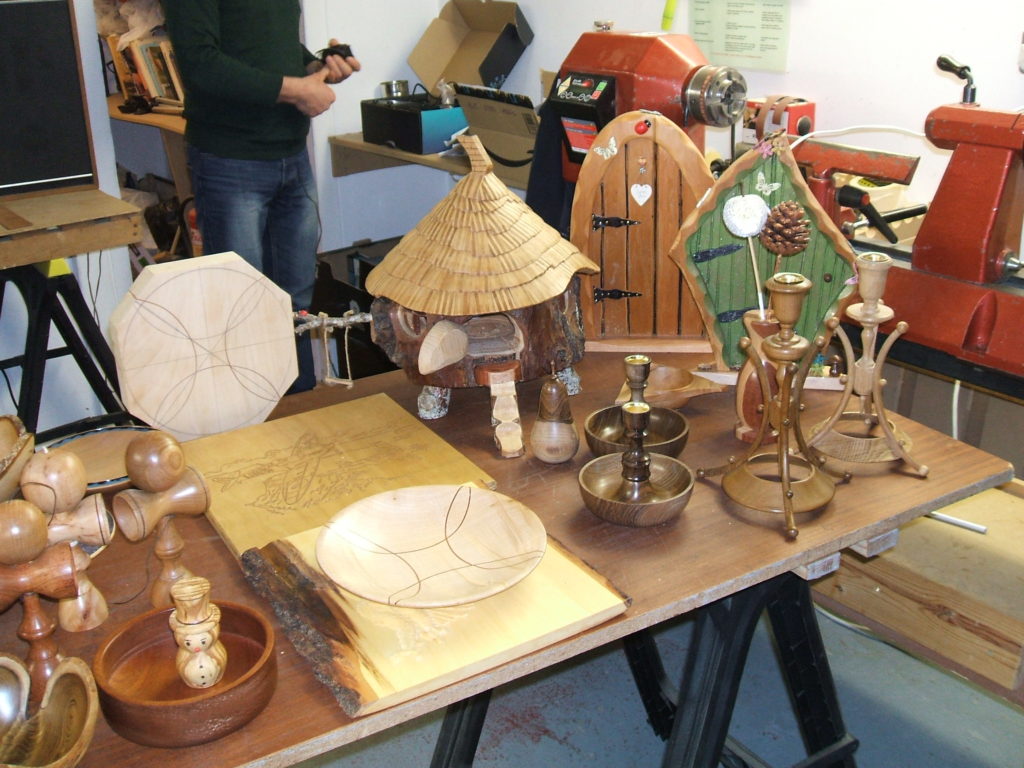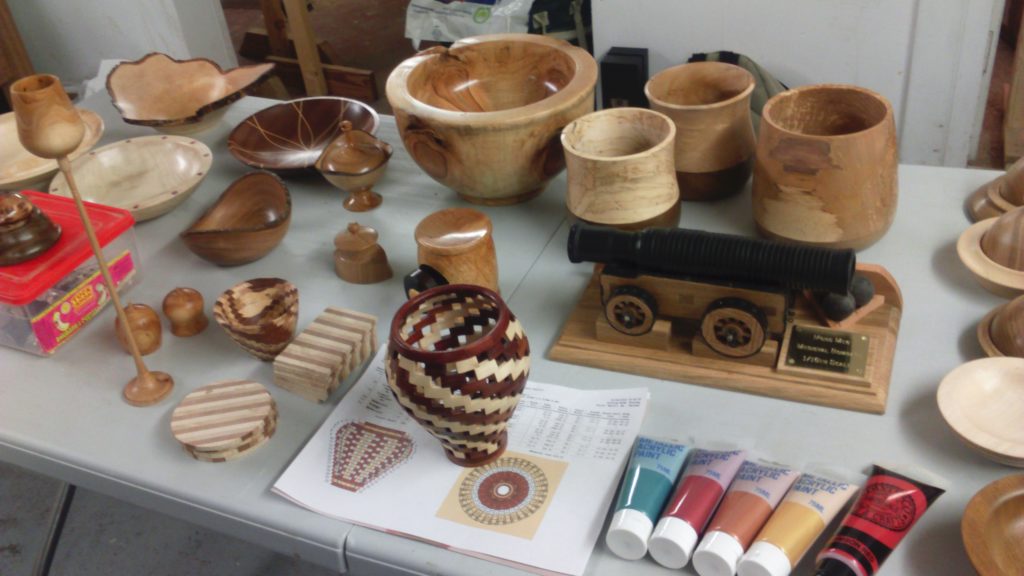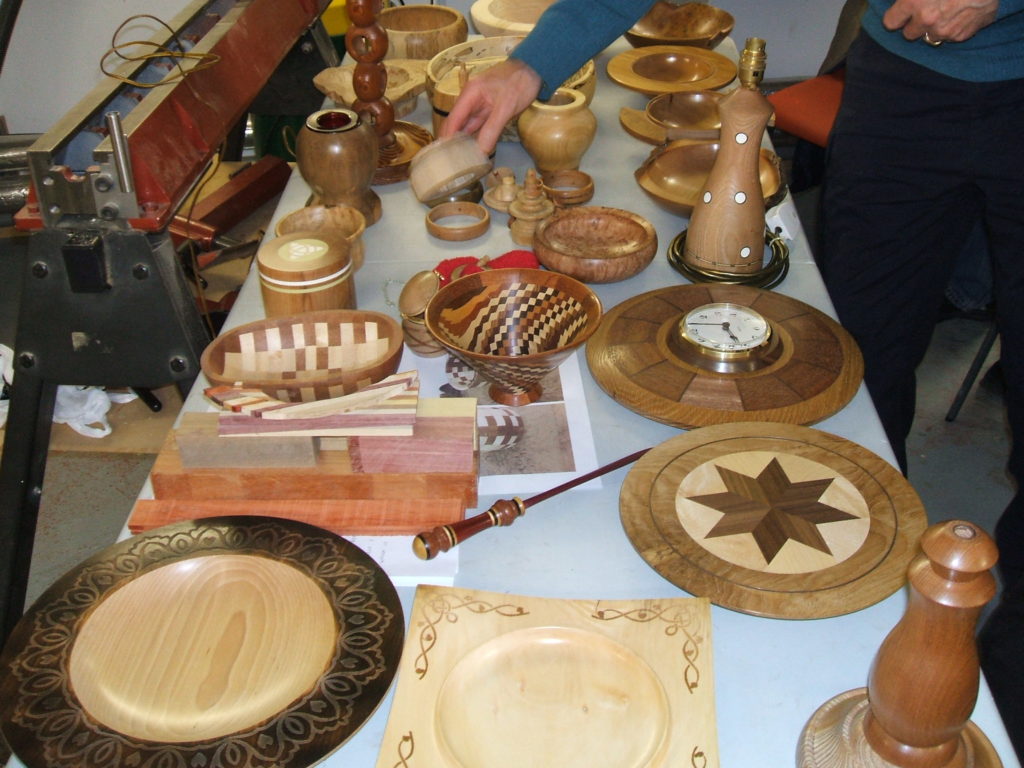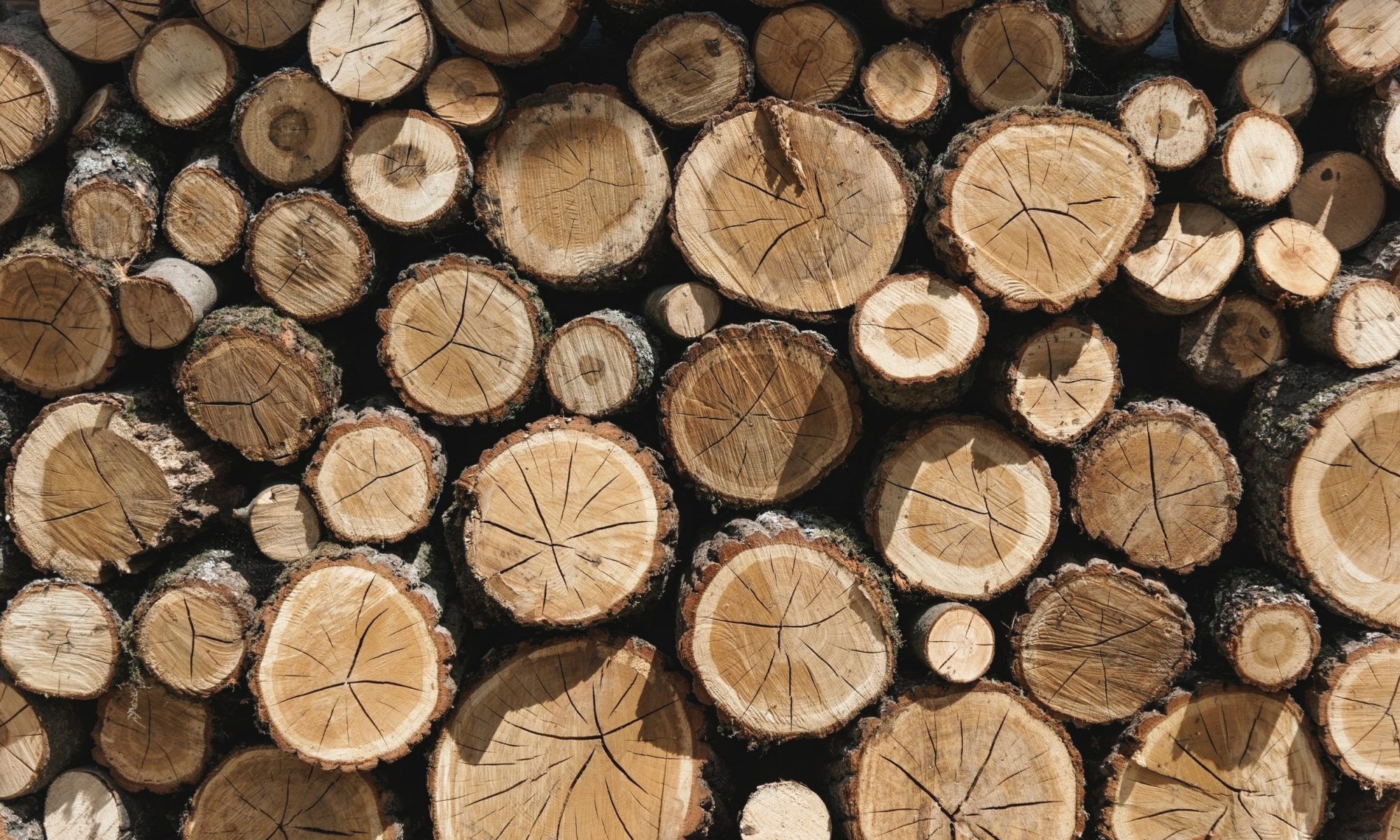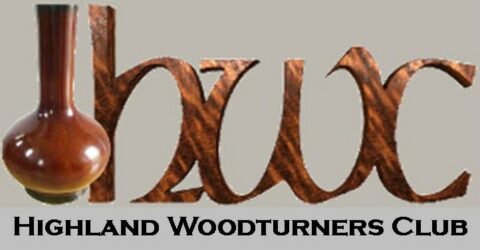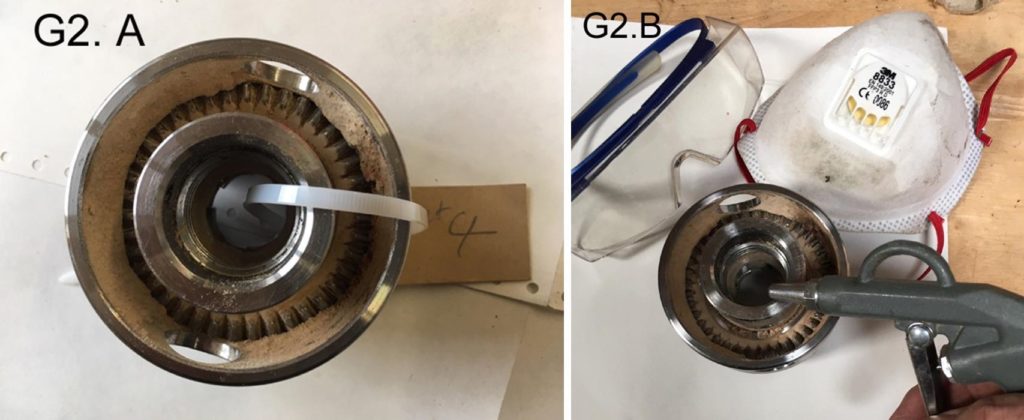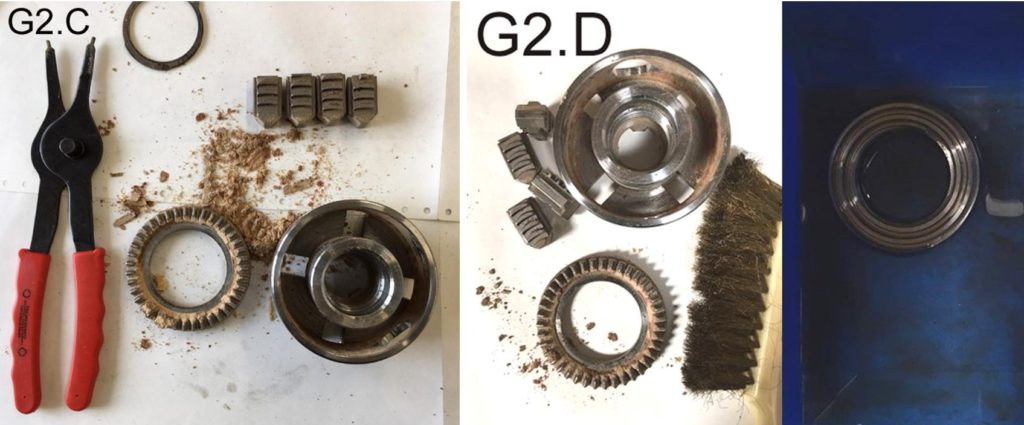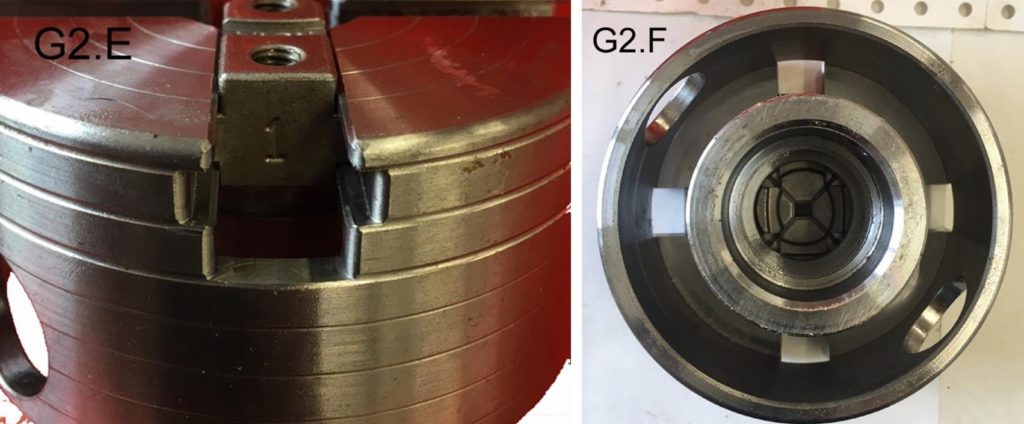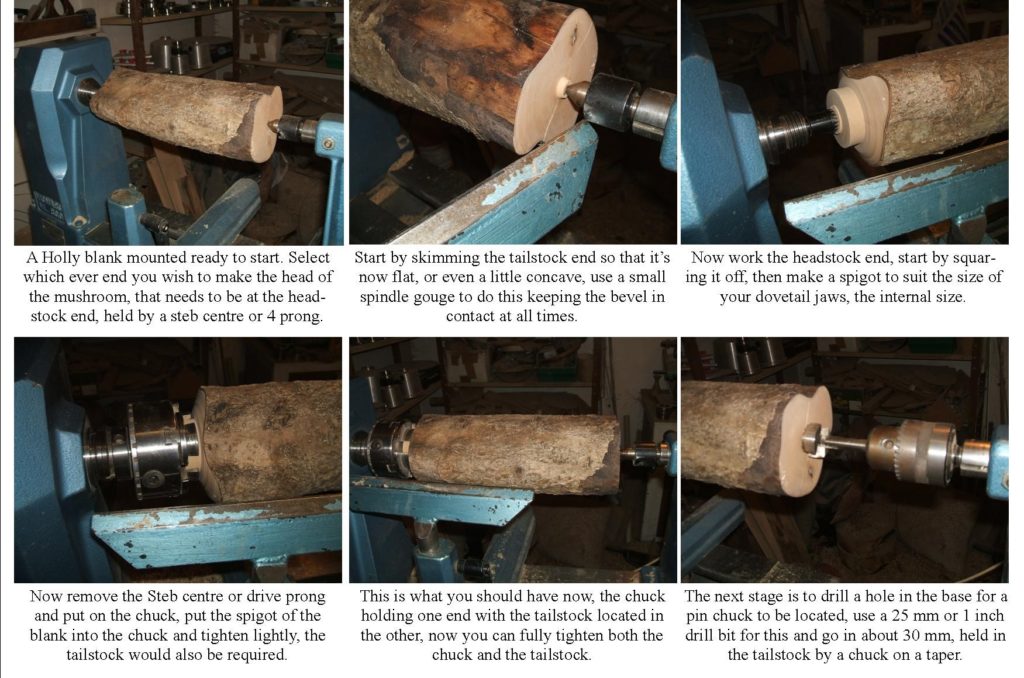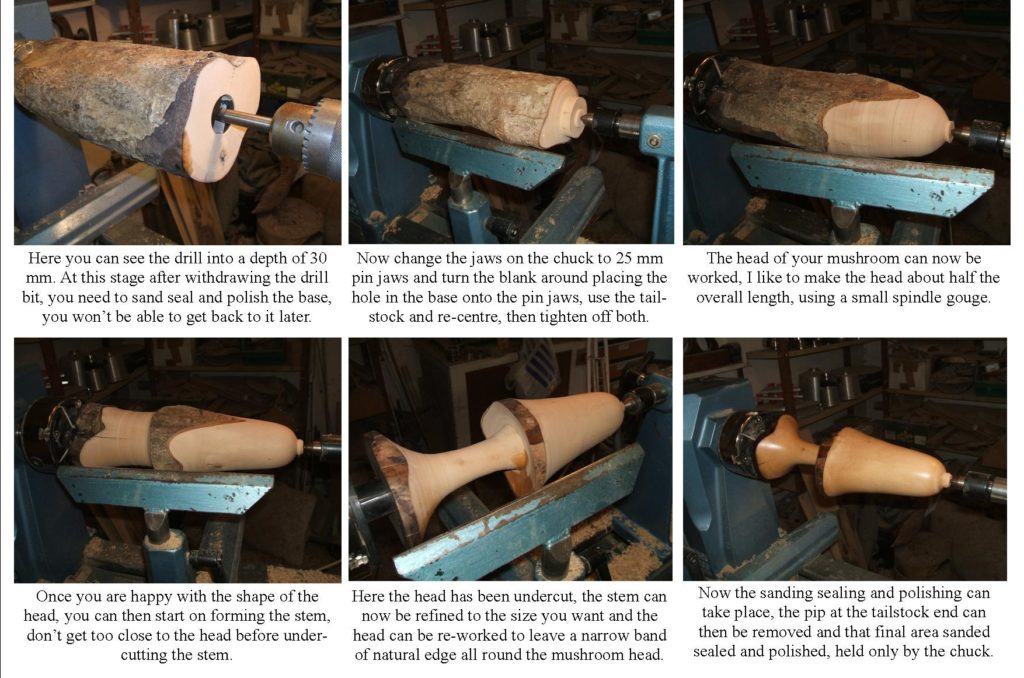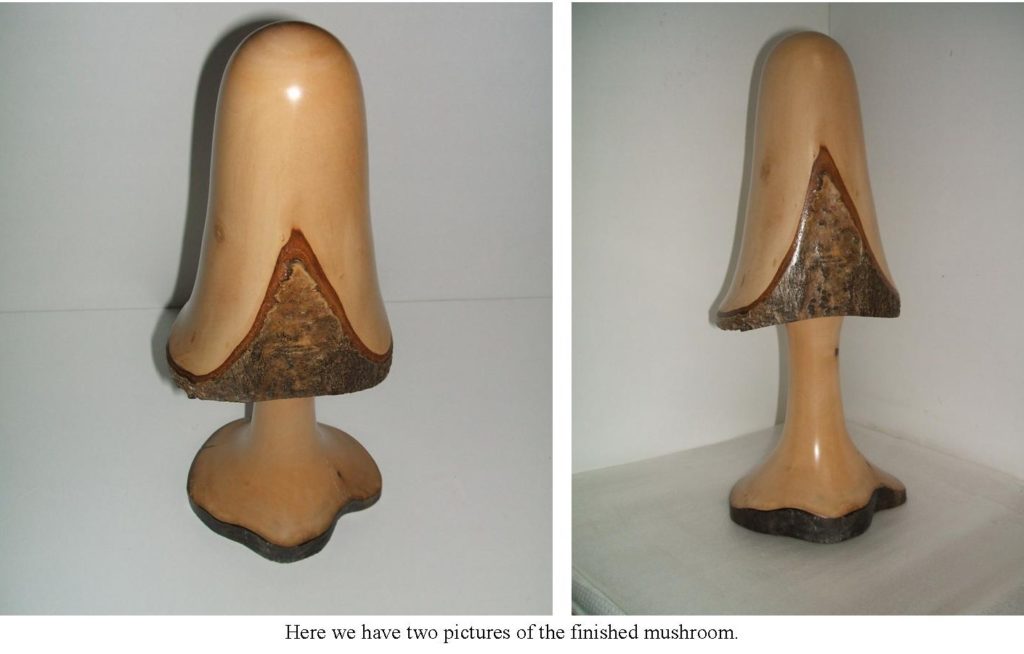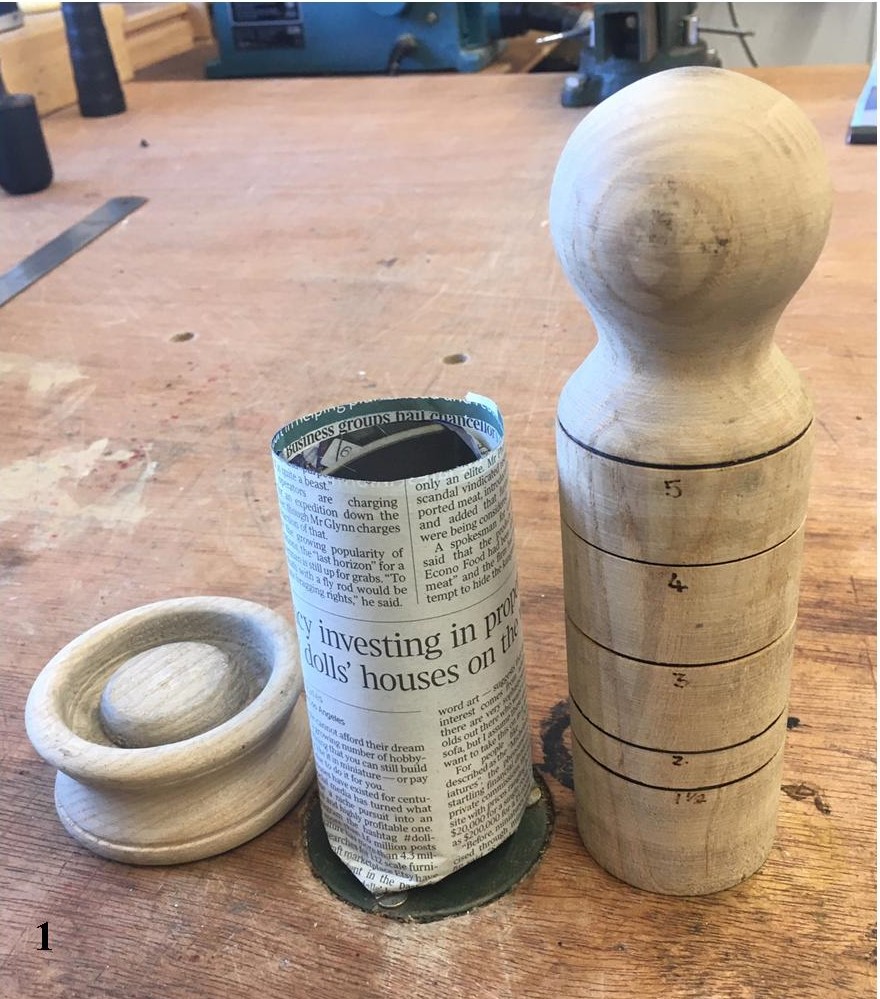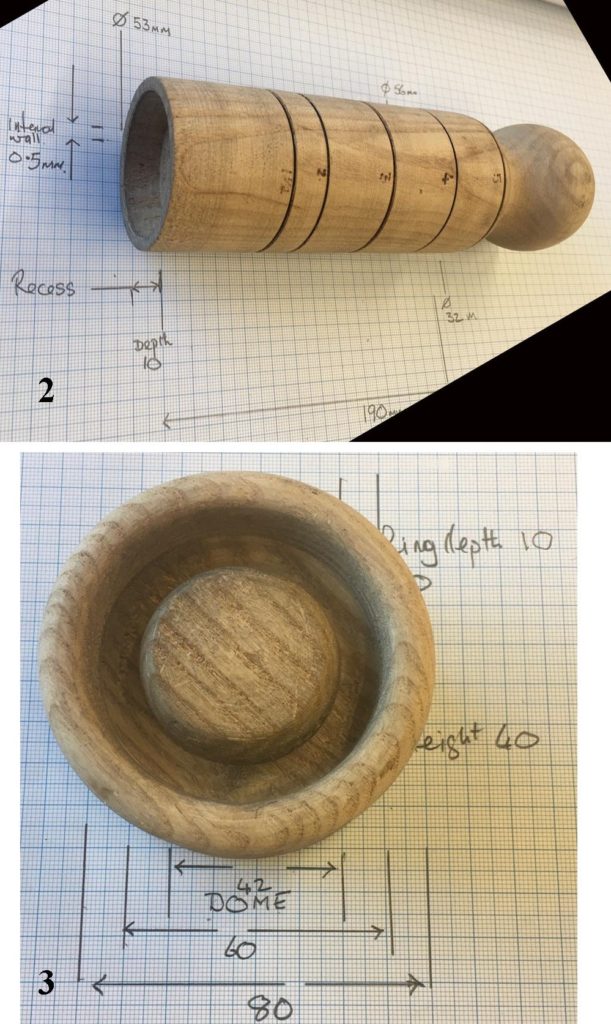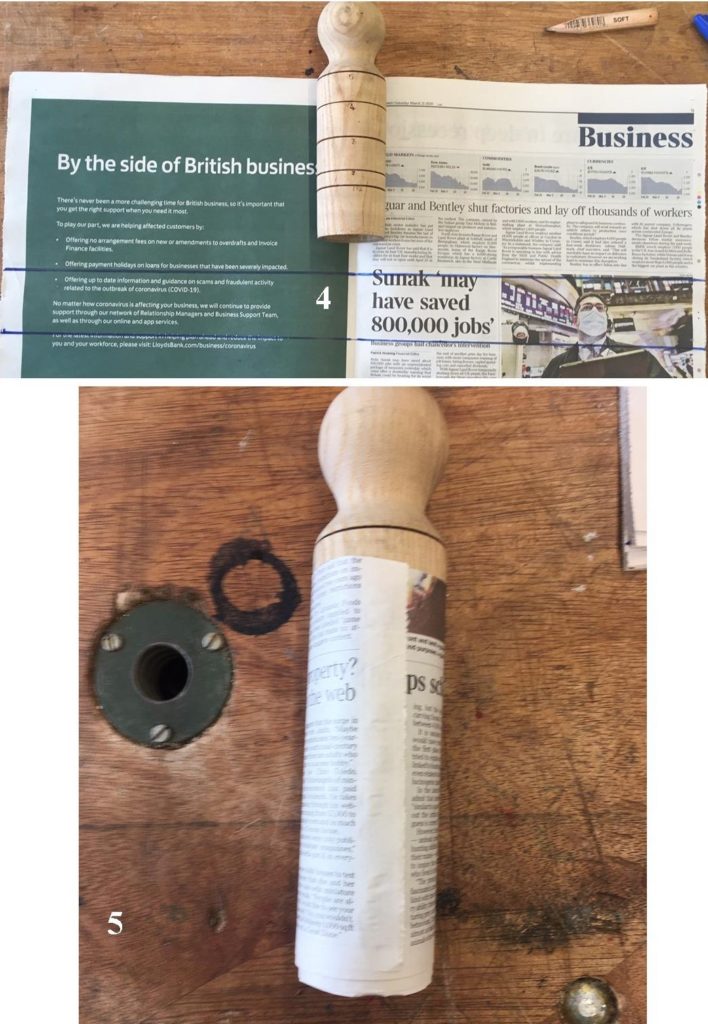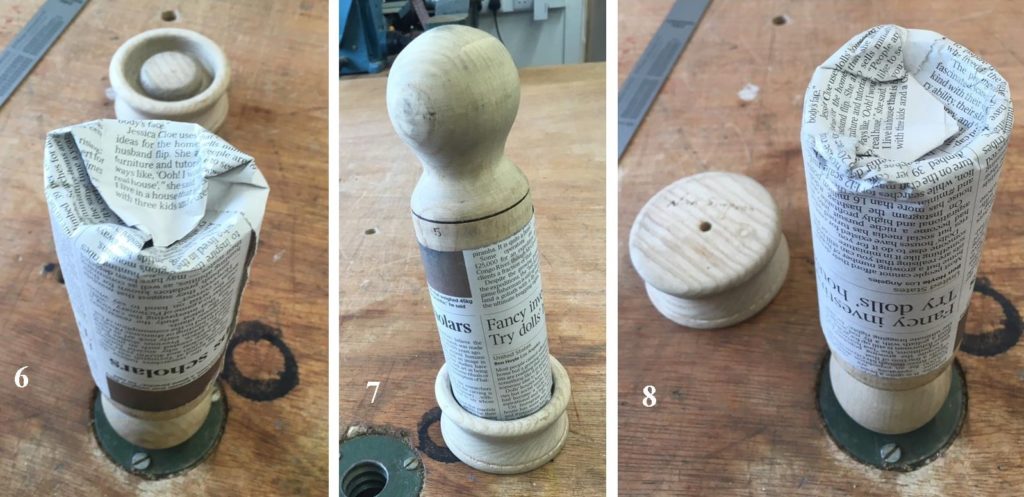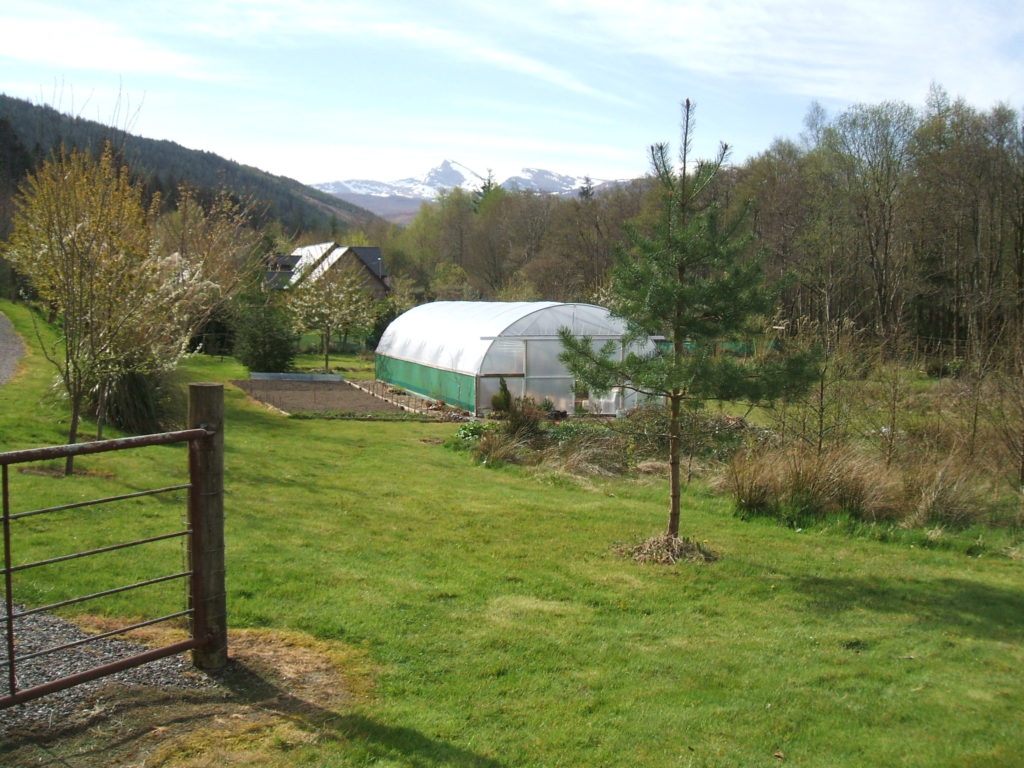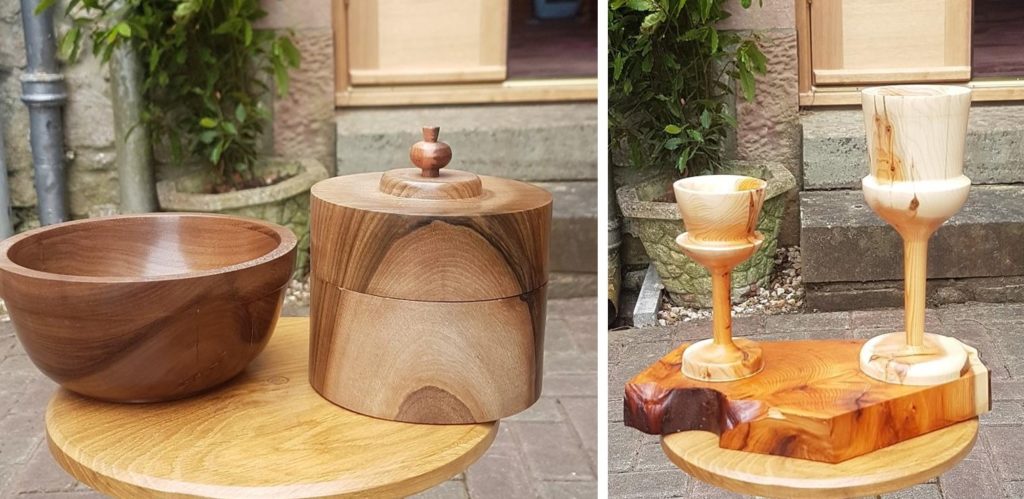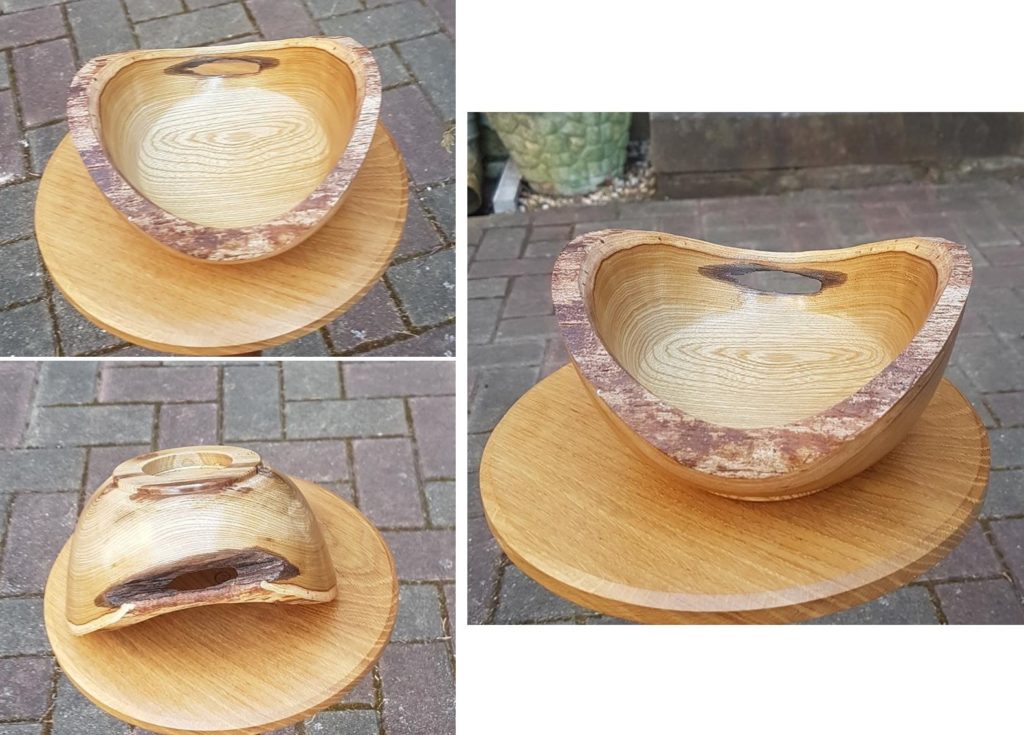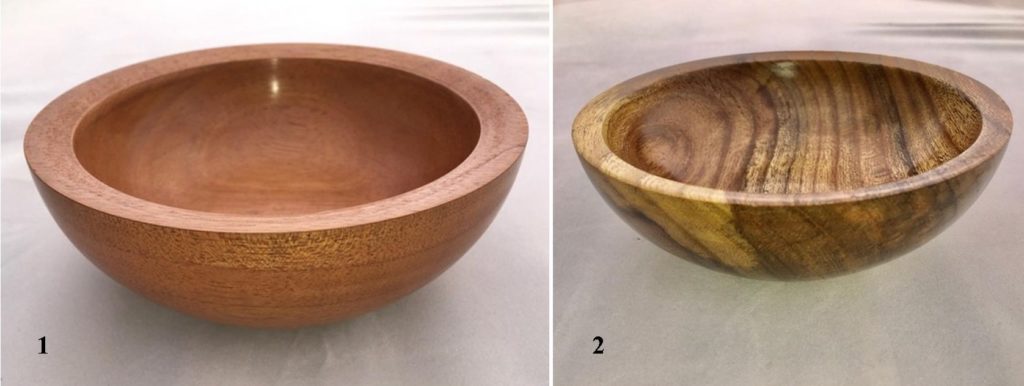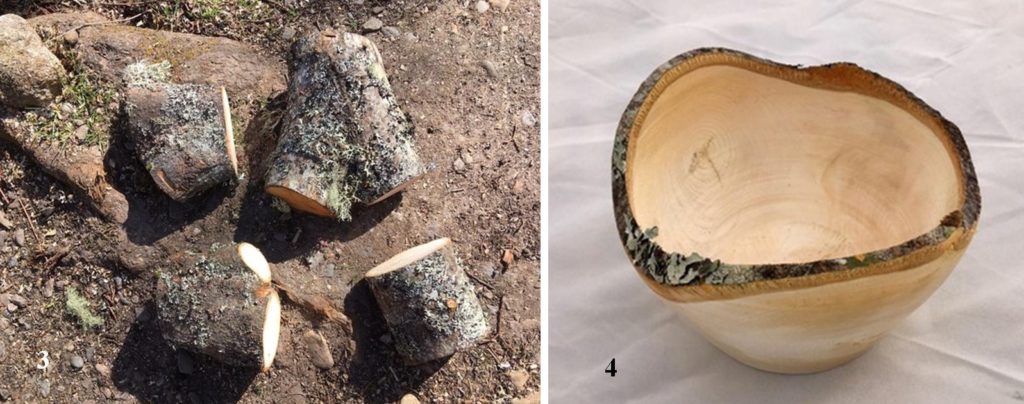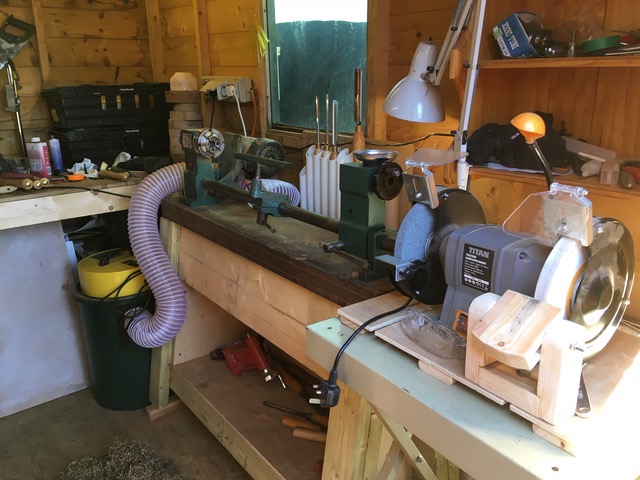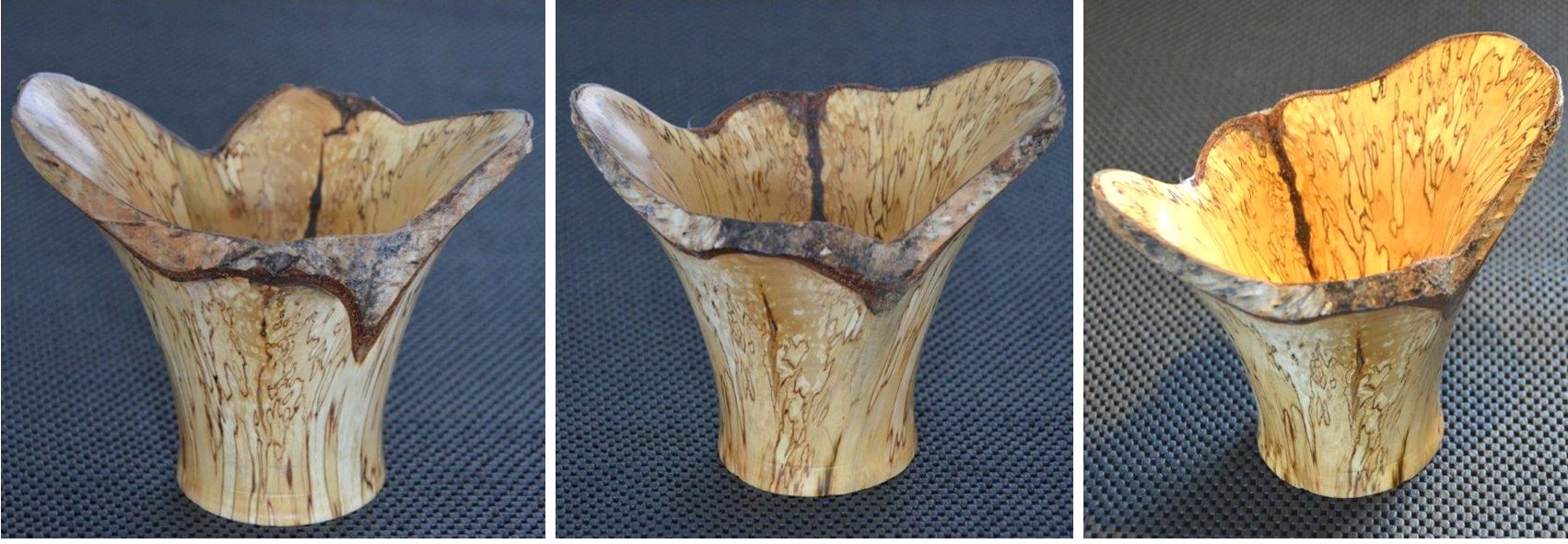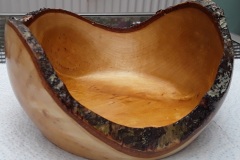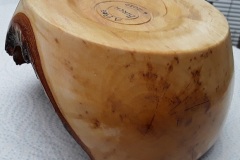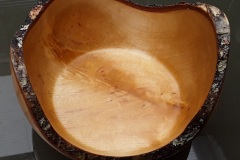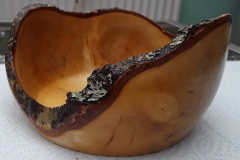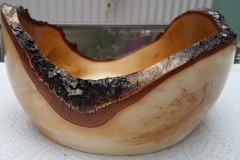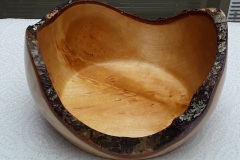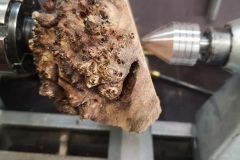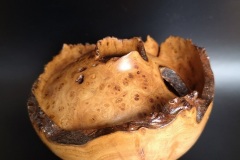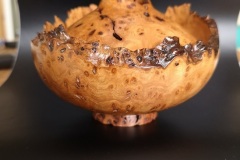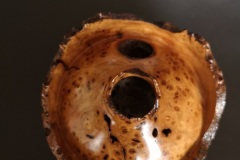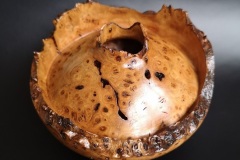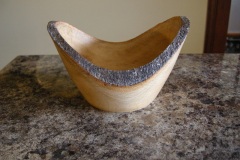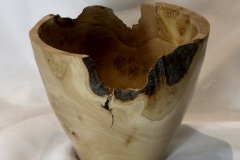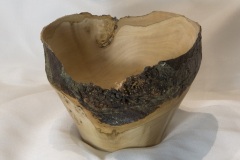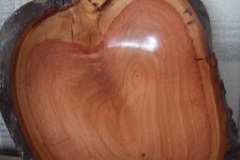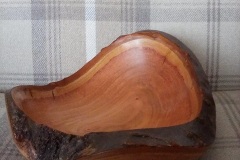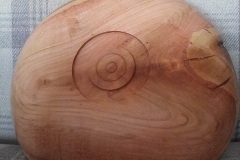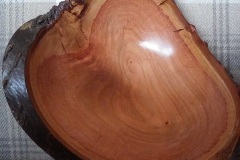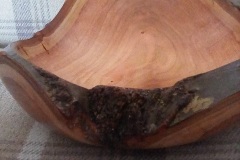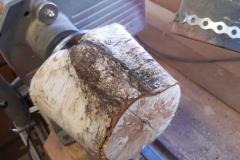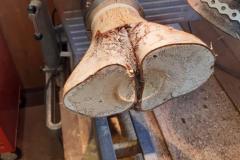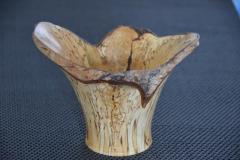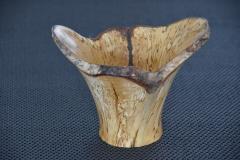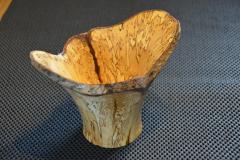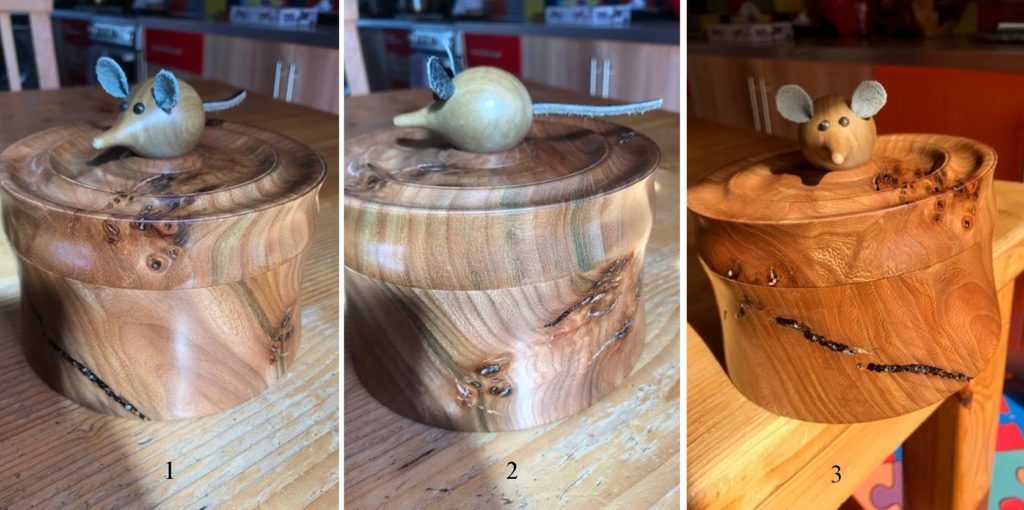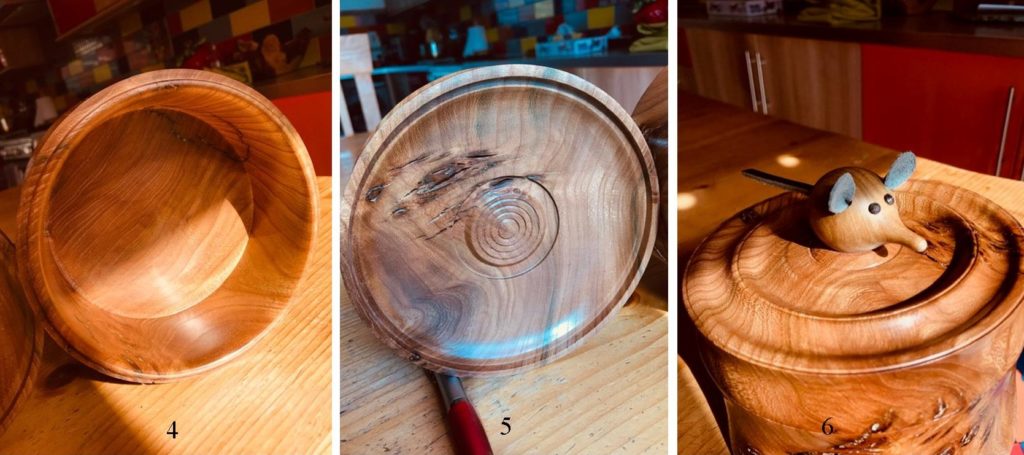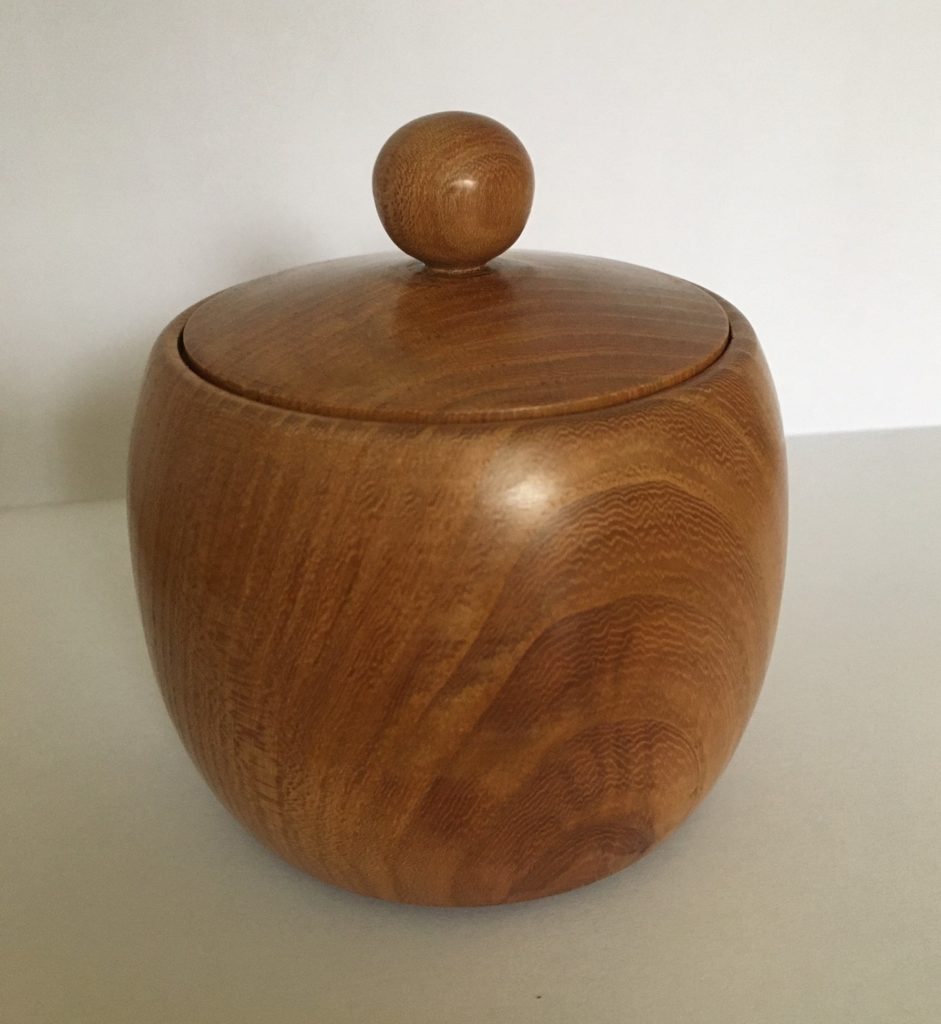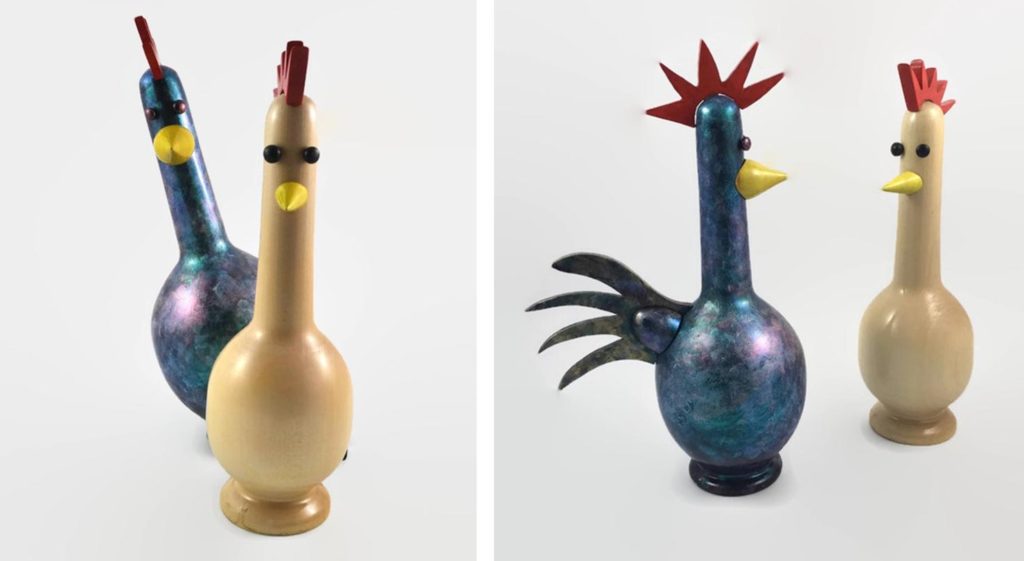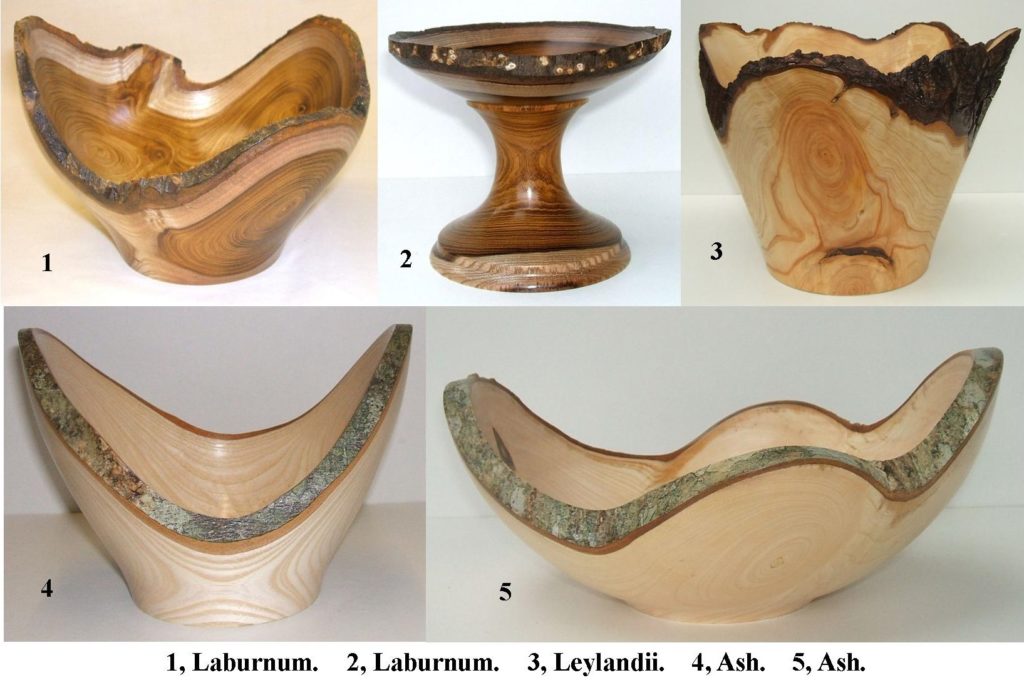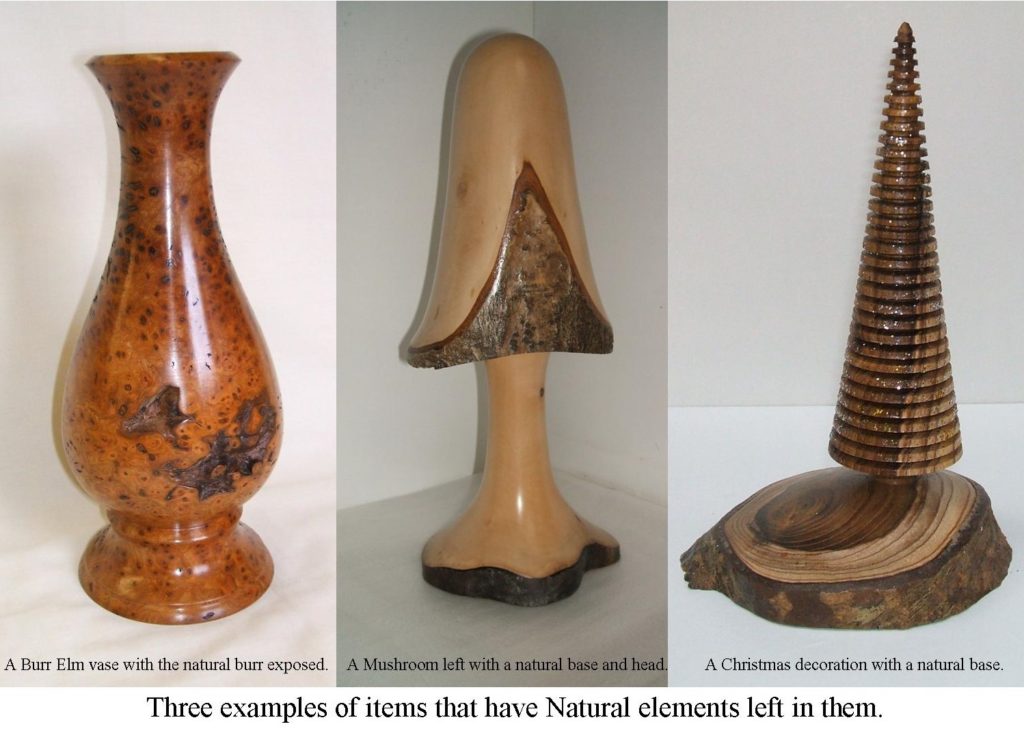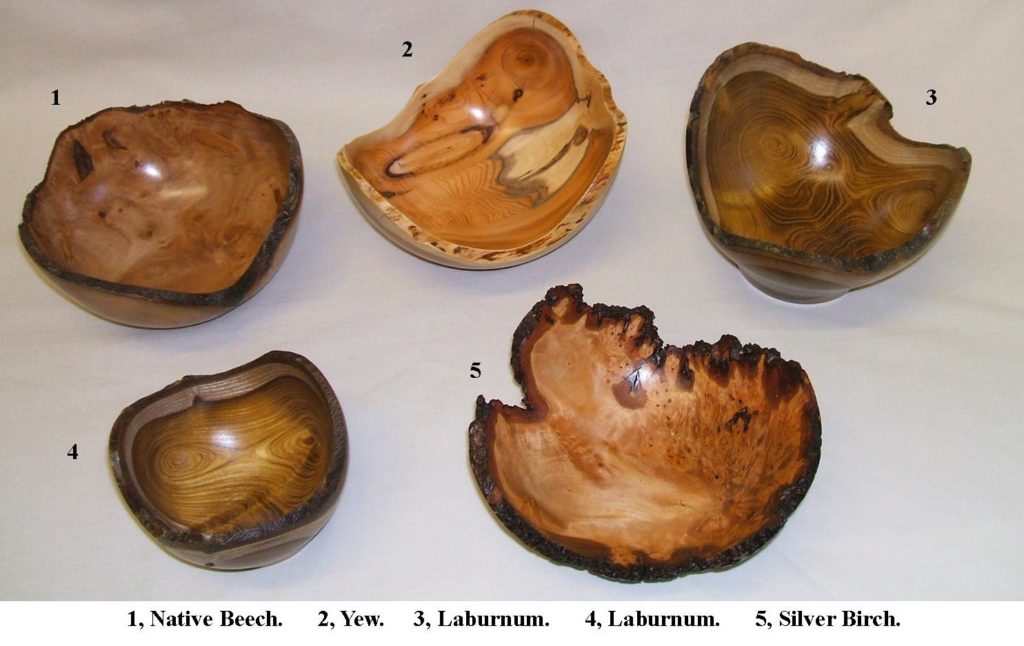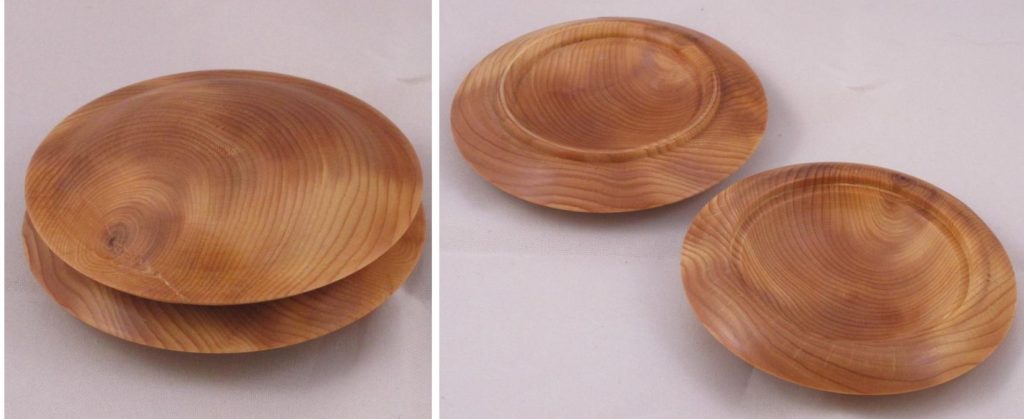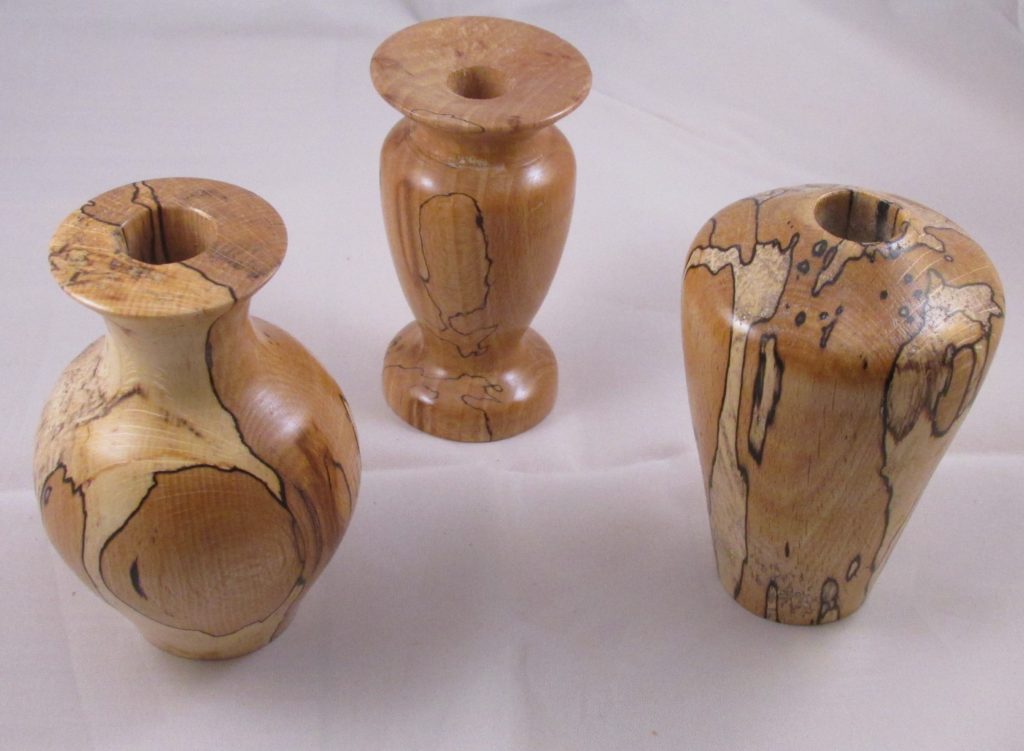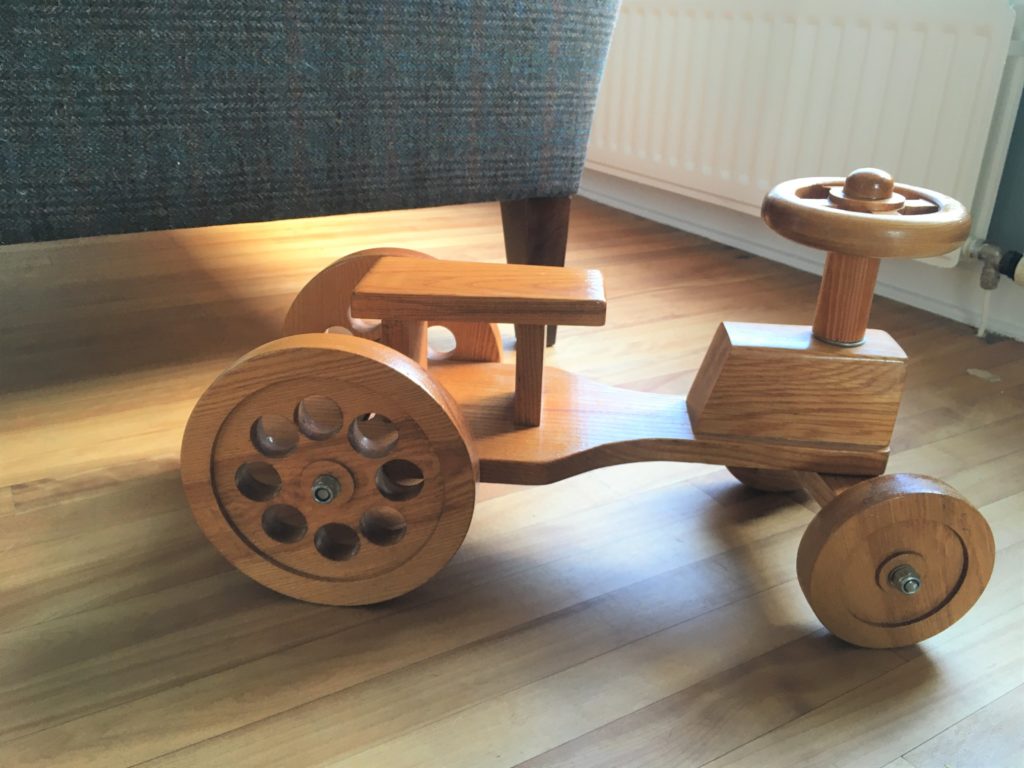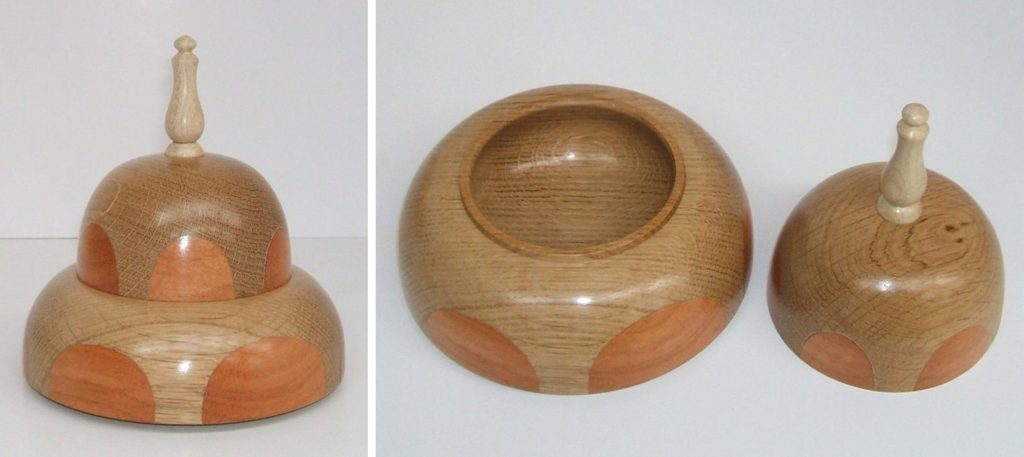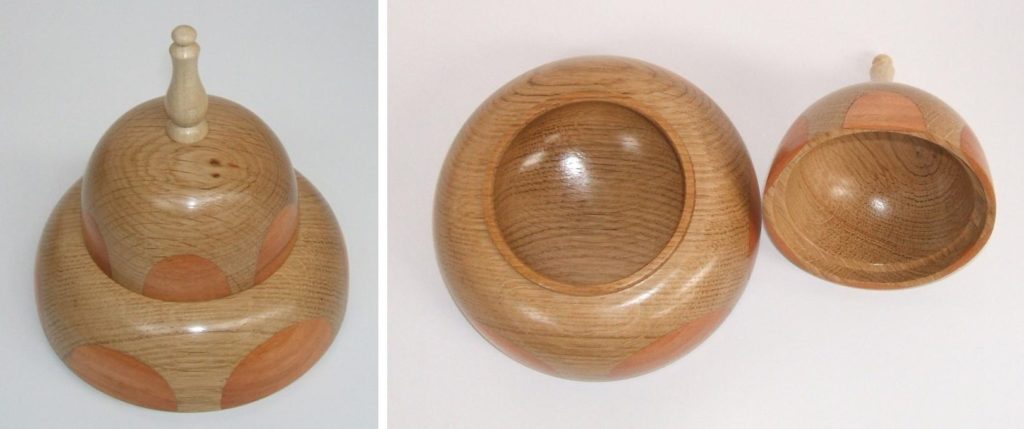As you are all aware our normal meeting would have been tonight 16th April 2020, as this did not happen we asked you to make this a virtual meeting, treating the meeting as if it had happened. The subject of the meeting was working with natural edges or inclusions and we asked you to make something along those lines and have it finished for the 16th April, we then asked you to send some pictures of what you had made for inclusion on our web site. I am very pleased to report that 10 members have done exactly what we wanted you to do and sent a total of 44 pictures along with some text, the best way to show all these is with a picture gallery, the text I will deal with separately, I will give the name of the member followed by a number system to identify whose pictures belong to whom, these will all be listed here and the pictures will follow.
Pictures 1 to 6 are from Alan Ross. Thanks for giving us something to target our efforts on.
Find attached photos of live edge bowl I have had a go at making.
dia- 150mm x 80mm high.
Made from a birch log with three branches on it.
Finished with sanding sealer and sanded to 400 grit. Three coats of melamine lacquer, buffed with ‘cut and paste’ then polished with Wood wax 22
Alan Ross (Nairn) .
Pictures 7 to 11 are from Dave Hutcheson.
Hope you are all well and staying safe. Here’s a hollow form I made today.This unusual blank came straight out of the firewood pile so required a wee bit of thinking as how to approach it. It’s a natural edged hollow form in burr elm and it’s finished with Liberon finishing oil. It measures 130mm wide by 95mm high. The branch inclusion only became apparent once turning was underway but I think it adds to the overall effect.
Cheers Dave Hutcheson
Pictures 12 to 14 are from Dave Line.
Please find attached Pictures of a couple of natural edge bowls as requested by Geoff.The 1st I made today is cross grain, it’s 150mm Dia by 90mm high. I don’t know what kind of wood it is. I picked it up a couple of years ago when I came across someone chopping a tree down in his garden.The second 2 are pictures of end grain turning I made a while back, again I don’t know what wood it is, I got it from you about a year ago. It is about 200mm high by about 140mm Dia.
Regards Dave Line.
Pictures 15 to 19 are from David Hobson.
The Bowl is made from Cherry
Finished with sanding sealer ,Yorkshire Grit and Liberon liquid wax
Size 230. X200 x 80.
David Hobson
Pictures 20 to 24 are from Errol Levings.
Hope the attached will be of interest.
As you can see, a very spalted piece of silver birch crotch of too small an angle between branches, so bark is included very deeply into the vase. Quite punky and difficult to avoid the soft bits breaking out – lots of sanding sealer and CA glue to harden them. Did not dare to make either a spigot or tenon, so sized bottom to fit direct into 965 mm chuck. Angle of bottom could have been slightly better to avoid marking by the chuck, despite several layers of masking tape to cushion the re-chuck. Also there had been some movement of the wood so no longer fully concentric.
Thank goodness we all live in our wide open environment and have our workshops as part of our “home.”
Kind regards
Errol Levings.
Pictures 25 & 26 are from Geoff Potter.
Here’s my submission of a natural edge bowl.
The small bowl is made from wood which I won in the Club’s fortnightly raffle and it is Laburnum I believe. The bowl was finished with a 400 grit abrasive, sanding seal and a melomine finish – inside and out. The bowl measures 15 by 7 cm.
Laburnum wood is highly coloured, retains its bark well and seems to produce a very glossy smooth finish.
Geoff Potter
Pictures 27 to 30 are from Hamish Stuart.
Hope you are all well and staying safe. Had a wee play this afternoon don’t know if it’s any good to you but thought I would send it anyway. Finished with melamine
Hamish Stuart.
Pictures 31 to 34 are from John Ruickbie.
I decided to make a natural edge clock for this occasion and wanted to change from the usual form. I used the first slice from a log the outer one with the bark on it. The circumference is important if it is too small the clock face resess will be too deep as in the first one I tried which was made of elm. The second attempt was made with sycamore and has a much shallower face. I also used a lighter base which improved the overall effect. I have included both pictures.
John Ruickbie.
Pictures 35 & 36 are from Nick Simpson.
Here are 2 natural edge pieces now that my workshop is up and running.The first is one of my own sycamore trees from Northumberland. It is a section of sound wood from a rotted-back section of branch at the trunk. It measures 8” by 4”. The damaged edges have been textured by burr and then scorched and wire-brushed. Finish was by sanding sealer (after scorching!) and Renaissance wax.
The vase is from a Yew branch in which the natural edge section was
simply the irregularity characteristic of yew but the bark couldn’t be
retained.. It is hollowed to 8mm but heavier at the base and stands 6” tall.
Finished with 10-400 mirca, sanding sealer and Renaissance wax, which I like
because it resists fingermarks.
Best wishes
Nick Simpson.
Pictures 37 to 44 are from me, Alec Mutch.
They show a natural edged bowl I made some time ago from a piece of Laburnum, it measured about 200 mm in length and just over 100 mm in height. The finish was my normal finish of Sanding sealer followed by a coat of Melamine and then buffed to a soft sheen. I like to use some weird shapes of blanks, as you will see it was made from a branch intersection.
Alec Mutch.
I would like to take this opportunity to thank all of you who took the time to make your items and more so to then send them to me for this post, we will be repeating this process for every meeting we have to miss due to this Virus, the next meeting would be on the 30th April 2020 and that will also be a Virtual meeting, the programme for that meeting is a Showtime meeting, it would normally be handled by myself. You can start to think of what you might make for this meeting, just imagine you will be there and send me the pictures of what you would have taken along for the members to see, remember there is no actual criteria for this meeting, just make whatever you like and send me the pictures and the text of course, pictures for this to be in by the 29th April. This should not stop you sending me any other pictures to upload between now and then, so keep sending me your pictures.
Remember the club house is still closed, you will be notified when we will re-start our meetings again, but in the meantime I hope you all stay safe from this deadly virus.
